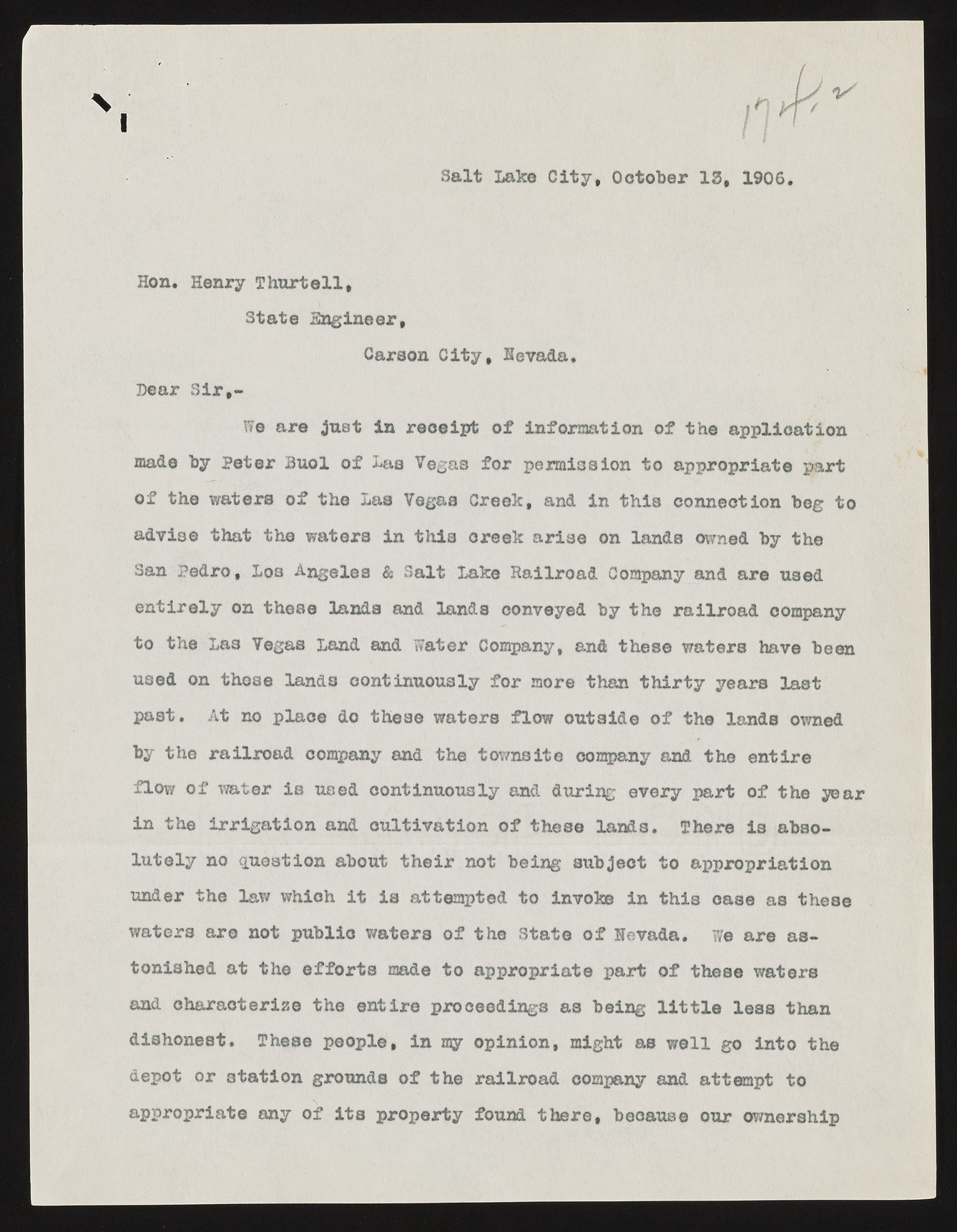Copyright & Fair-use Agreement
UNLV Special Collections provides copies of materials to facilitate private study, scholarship, or research. Material not in the public domain may be used according to fair use of copyrighted materials as defined by copyright law. Please cite us.
Please note that UNLV may not own the copyright to these materials and cannot provide permission to publish or distribute materials when UNLV is not the copyright holder. The user is solely responsible for determining the copyright status of materials and obtaining permission to use material from the copyright holder and for determining whether any permissions relating to any other rights are necessary for the intended use, and for obtaining all required permissions beyond that allowed by fair use.
Read more about our reproduction and use policy.
I agree.Information
Digital ID
Permalink
Details
Member of
More Info
Rights
Digital Provenance
Publisher
Transcription
Salt Lake City, October 13, 1906* Hon. Henry T h u rtell. State Engineer, Carson C ity, Hevada. Dear S i r ,- We are just in receipt o f information of the application made by Peter Buol of Las Vegas for permission to appropriate part o f the waters o f the Las Vegas Creek, and in this connection beg to advise that the waters in th is creek arise on lands owned by the San Pedro, Los Angeles & Salt Lake Railroad Company and are used en tirely on these lands and lands conveyed by the railroad company to the Las Vegas Land and Water Company, and these waters have been used on these lands continuously for more than th irty years last past. At no place do these waters flow outside o f the lands owned by the railroad company and the towns it a company and the entire flow o f water is used continuously and during every part of the year in the irrig a tio n and cultivation o f these lands. There is absolu te ly no question about th eir not being subject to appropriation under the law which it is attempted to invoke in this case as these waters are not public waters o f the State o f Hevada. We are astonished at the e ffo rts made to appropriate part of these waters and characterize the entire proceedings as being l i t t l e leas than dishonest. These people, in my opinion, might as w ell go into the depot or station grounds o f the railroad company and attempt to appropriate any of it s property found there, because our ownership

